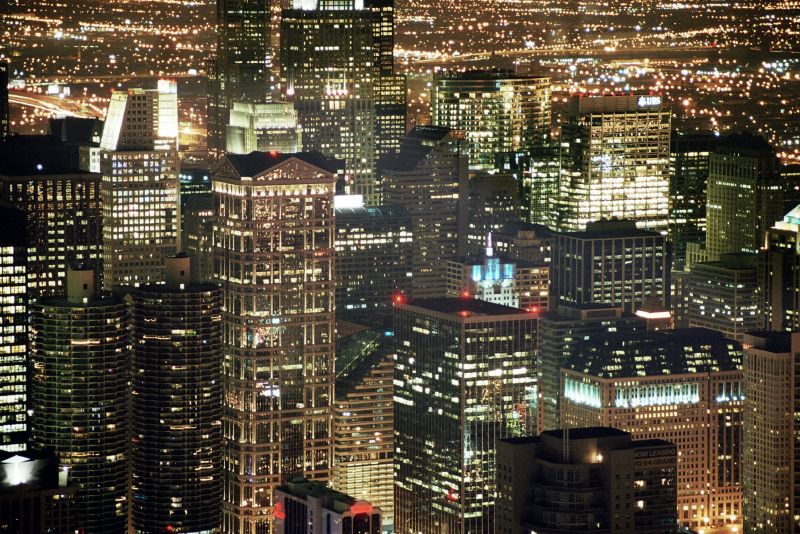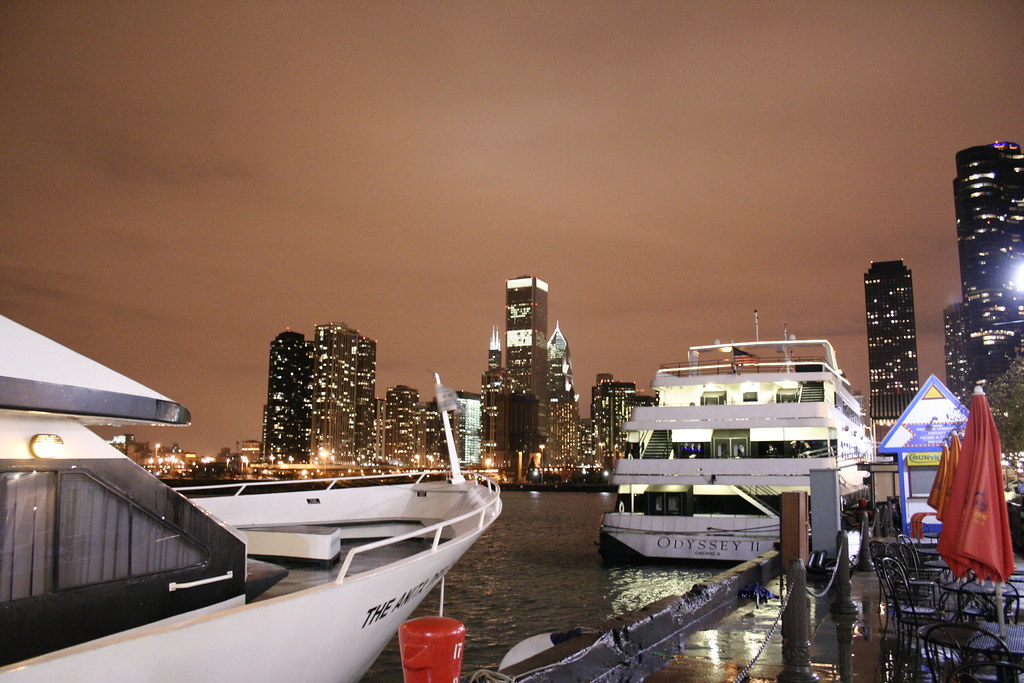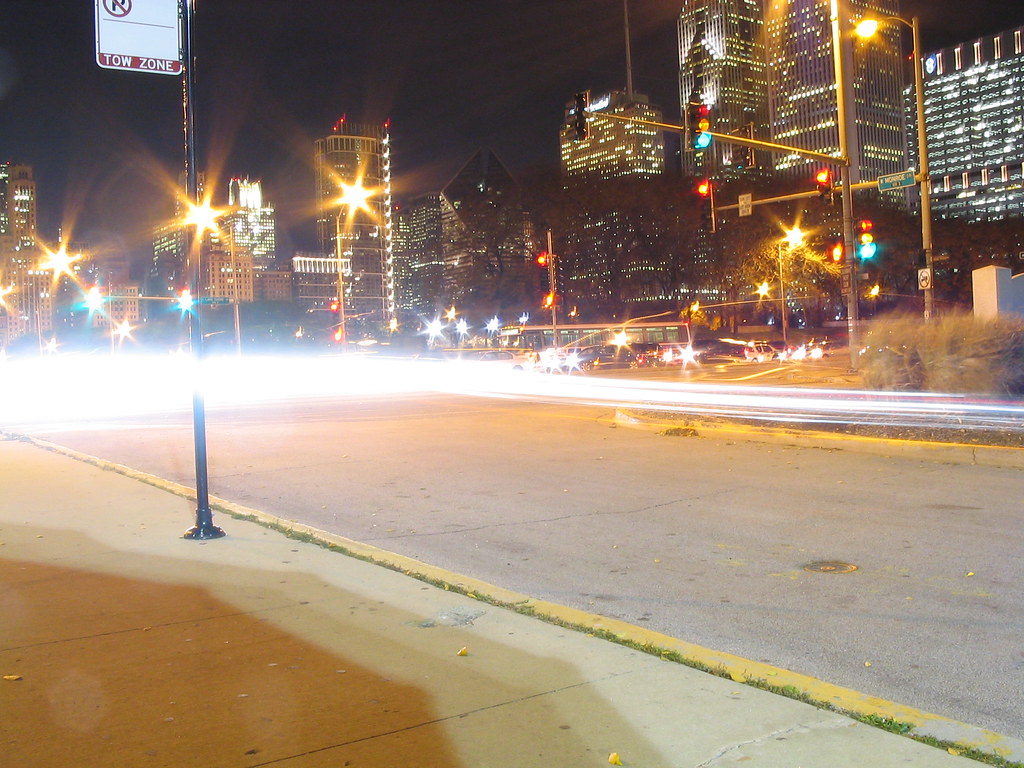THIS THREAD IS NOT ABOUT THE GREATNESS OF N.Y.C.. A GREATNESS TOO EVIDENT TO EVEN BE DISCUSSED. THIS THREAD IS ABOUT HOW N.Y.C. FITS IN WITH ITS FELLOW U.S. CITIES. |
Sunday, April 15, 2007
NYC: light years away...or one of the pack?
Posted by
Admin
at
11:30 PM
0
comments
![]()
Do you see any hope for the Rust Belt?
This region has been decaying for decades now, and recent attempts to clean things up haven't been all to successful. Is there any hope for these cities?> |
Posted by
Admin
at
10:30 PM
0
comments
![]()
CBD Tornado's
I reall hope someone can give me some insight on what happened to downtowns when a tornado struck the premises. For instance, Oklahoma city...if i recall, a twister struck the CBD a few years back but i never saw any damaged photos. I cant remember any other large cities getting hit except milwaukee near the airport and minneapolis in the suburbs. How do the buildings stand up against the tornado when it enters within proximity. N.O. downtown had countless windows blow out in their towers after the hurricane struck. I love to make the connection with weather and how architects design buildings to withstand such impact. SF is an example of a big city constructing buildings that prevent collapses from earthquakes. What ever happened to OKC that day of the tornado! Some one fill me in and discuss> |
Posted by
Admin
at
9:00 PM
0
comments
![]()
A Misfit ahead of "His" Time
Misfit S.F. is just ahead of its time |
Posted by
Admin
at
8:30 PM
0
comments
![]()
Bush Government pays people to marry
It's true. The so-called "Republicans" are paying couples to get married. That's YOUR taxpayer money paying for someone half way across the country to get married!!!> |
Posted by
Admin
at
8:00 PM
0
comments
![]()
Bush Government pays people to marry
It's true. The so-called "Republicans" are paying couples to get married. That's YOUR taxpayer money paying for someone half way across the country to get married!!!> |
Posted by
Admin
at
7:30 PM
0
comments
![]()
Boxiest US Skyline
What US skyline is boxier than boxy? |
Posted by
Admin
at
7:00 PM
0
comments
![]()
Annex or no annex?
Which do you prefer and why? Annexation or no annexation?> |
Posted by
Admin
at
6:30 PM
0
comments
![]()
Are your city's city limits "frozen"?
Are your city's city limits "frozen"....that is, set for eternity? |
Posted by
Admin
at
6:00 PM
0
comments
![]()
Which Area of the sunbelt will be best for investing in real estate in 10-15 years???
Which Area of the U.S. Sunbelt do you feel will be best for investing in real estate 10-15 years down the road? Please justify your answer. |
Posted by
Admin
at
5:00 PM
0
comments
![]()
Would Las Vegas to become most successful city and suprasses LA at overall?
Quote:>
|
Posted by
Admin
at
4:00 PM
0
comments
![]()
Articles on Phoenix sprawl
Take a look at this, here's one of the many articles (narrated by pictures)on Sprawlopolis USA. It actually shows that the people of Arizona actually prefer the sprawl...also i think you will find the pictures quite...interesting. |
Posted by
Admin
at
3:30 PM
0
comments
![]()
How is light rail for you city?
Choose how you feel light rail is for you city.> |
Posted by
Admin
at
3:00 PM
0
comments
![]()
If Darth Vader lived in America, where would he live?
Where would Darth Vader choose to set up shop?> |
Posted by
Admin
at
2:30 PM
0
comments
![]()
Show your city's lights and night shots
|
Posted by
Admin
at
2:00 PM
0
comments
![]()
Whats the largest populated suburb in your greater metro
suburbs/ cities in greater metro |
Posted by
Admin
at
1:30 PM
0
comments
![]()
CALIFORNIA: An increasingly Negative Domestic Migration
http://www.nytimes.com/2005/11/07/bu...rtner=homepage |
Posted by
Admin
at
1:00 PM
0
comments
![]()
Motown - reborn
I live pretty close to this town and out cities share a "whole bunch of economical realities...". |
Posted by
Admin
at
12:30 PM
0
comments
![]()
In 2008- Republicans vs. Democrats vs. Third Parties
How will you vote during the 2008 Presidential, senate, and House of Representatives (or congress) elections?> |
Posted by
Admin
at
12:00 PM
0
comments
![]()
What's the more important world city? LA or Chicago?
Ok, first off I would like to clarify things by saying this is NOT a "which city do you like better" or "which skyline is better" or "which city is more urban", this is asking your opinion of which U.S. city, behind NYC obviously, is a bigger player in the scheme of world cities? I got the idea for this thread by reading another thread that had forumers arguing between which city, LA or Chicago, was more important. This is derived from the 2000 rankings |
Posted by
Admin
at
11:30 AM
0
comments
![]()
YOUR CITY DO OVER WISHLIST
This is closely related to the "which city needs to start over" thread. I feel some cities have some things that in retrospect should not have been done, but otherwise have not harmed the city overall. I will start so you get the idea. |
Posted by
Admin
at
10:30 AM
0
comments
![]()
Gross State Product 2004
States ranked by Economic Output per person: |
Posted by
Admin
at
10:00 AM
0
comments
![]()
What is America's worst sprawled mess?
Now I know a looooooooooot about urban-sprawl, but I must ask all of you, what is America's worst sprawled city/metro area?> |
Posted by
Admin
at
9:30 AM
0
comments
![]()
California Importing Poverty Faster Than Any Other State
CaliforniaÂ's per capita real (inflation-adjusted) income will fall 11 percent over the next two decades if current demographic and educational trends continue. The decline will be larger than that of any other state, and more than 5-times the two percent decline in per capita income projected for the nation, according to a just released study by the National Center for Public Policy and Higher Education [As America Becomes More Diverse: The Impact of State Higher Education Inequality, November 2005] Never in U.S. history has per capita real income declined over a two-decade span. But then again, never have American demographics been so impacted by an influx of unskilled minority workers. The share of CaliforniaÂ's labor force consisting of whites is expected to fall to 39 percent in 2020; it had been 71 percent as recently as 1980. CaliforniaÂ's growth is almost completely within the Hispanic population, whose workforce share is expected to jump from 16 percent in 1980 to 38 percent in 2020. Immigration is the primary driver. Per capita real income is being dragged down because, amazingly, public policy is to import poverty—and all its problems. You might think restrictive immigration policy is a no brainer given these projections. It would postpone, if not reverse, the projected declines in per capita income. But you would think wrong. The National Center for Public Policy and Higher Education is a think tank supported by the Student Loan Marketing AssociationÂ's foundation. Not surprisingly, it proposes increasing aid to low income and minority students to close the education gap between whites and minorities. ThatÂ's a tall order for any state, especially California. Among the stateÂ's working-age adults, about 52 percent of Hispanics do not have a high school degree, compared to 8 percent of whites. At the other end of the educational spectrum only 12 percent of the stateÂ's adult Hispanics have a college degree compared to 46 percent of adult whites. Both gaps are larger and have grown faster in California than in other states. In a perfect world, states could raise minority college enrollments while leaving white rates unchanged. But the world, alas, is far from perfect. As the The National Center for Public Policy and Higher Education report itself says (page 34 [PDF]), Â"With the federal budget deficit at an all-time high and states struggling to fund growth in the least discretionary components of their budgetsÂ….the outlook for increased student aid to low-income families and minorities is grim. Under these circumstances, it is increasingly important that state grant aid programs are carefully targeted at those who need it most and who would not attend postsecondary education without it.Â" Translation: California, like other cash strapped states, will have to finance education aid increases for immigrant minorities by reducing such funds for native-born whites. This makes curtailing mass immigration even more vital. Ask the National Center for Public Policy and Higher Education why this didnÂ't occur to it. Edwin S. Rubenstein (email him) is President of ESR Research Economic Consultants in Indianapolis.> |
Posted by
Admin
at
9:00 AM
0
comments
![]()
Wisconsin Space Center proposal!
This hasnt gotten alot of responses in the Midwest section....which is weird. Here it is for your enjoyment. |
Posted by
Admin
at
8:30 AM
0
comments
![]()
US universities: who determines "what's in a name"?
For American universities, who really determines "what's in a name"....the institutions themselves or the market place? That market place is often linked to universities' atheltic programs. |
Posted by
Admin
at
7:00 AM
0
comments
![]()
Blandness
Who takes the crown for blandness in the United States? In fact, lets make this three categories: blandest big city, blandest state, and blandest region. After visiting the Mississippi Delta area I can say that it's pretty damn bland down "thurr".> |
Posted by
Admin
at
6:01 AM
0
comments
![]()
Which US city is most like......us!?!?
This forum is loaded with people filled to the brim with civic pride, if not downright civic chauvenism. So many of us are fascinated by our city, love to read about it, talk about it, and share it with others. We seek out documentaries about our city and fill our houses with momentos of it. |
Posted by
Admin
at
5:30 AM
0
comments
![]()
What American city needs to "start over" the most?
There are some American cities that have gone so far into a pit of self-destruction and despair that some may even proclaim, "we might as well start over!" |
Posted by
Admin
at
5:00 AM
0
comments
![]()
CHICAGO: "High Anxiety" Article
It is an interesting article which I think you should show it to your city's planners. |
Posted by
Admin
at
3:30 AM
0
comments
![]()
Downtown Living Boom?
I've noticed many mid-sized cities starting to have strong downtown living trends. Condos and Apartments are being announced in many cities, like Charlotte's fabulous Epicenter. Omaha and Indianapolis are getting some pretty tall developments. Here in OKC, downtown units are expected to increase by 10,000 by 2015. (And I think it could even be more than that; there are already a lot of ongoing conversions and developments going on.) |
Posted by
Admin
at
3:00 AM
0
comments
![]()
Weekly Lists - Good Visibility
Good Visibility: 10 cities in the United States with the Highet Percentage of Time When Visibility is 10 Miles or More |
Posted by
Admin
at
2:30 AM
0
comments
![]()
Eastern States, Central States, Western States: Place each state in a category.
What states do you consider Eastern States? List them. |
Posted by
Admin
at
1:30 AM
0
comments
![]()
What is America's premiere hipster city (part 2)?
Hi, I'm a retard from LA who needs somebody to lick my ego from time to time. I am not really secure about my home city, thus I keep starting threads that loudly proclaim how great LA is and how it is equal to NY in every possible way imaginable. Then I start polls where only LA and NY are options because it is my goal to make everybody think that their city is inferior to mine.> |
Posted by
Admin
at
1:02 AM
0
comments
![]()
Most underrated skyline
So, which is it? You can vote for many.> |
Posted by
Admin
at
12:00 AM
0
comments
![]()

 >
> 
 >
> 














 >
> 
 >
>